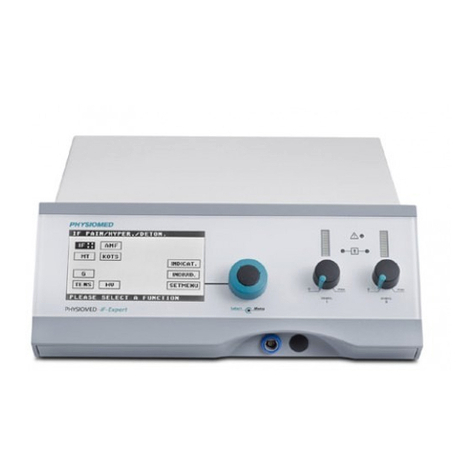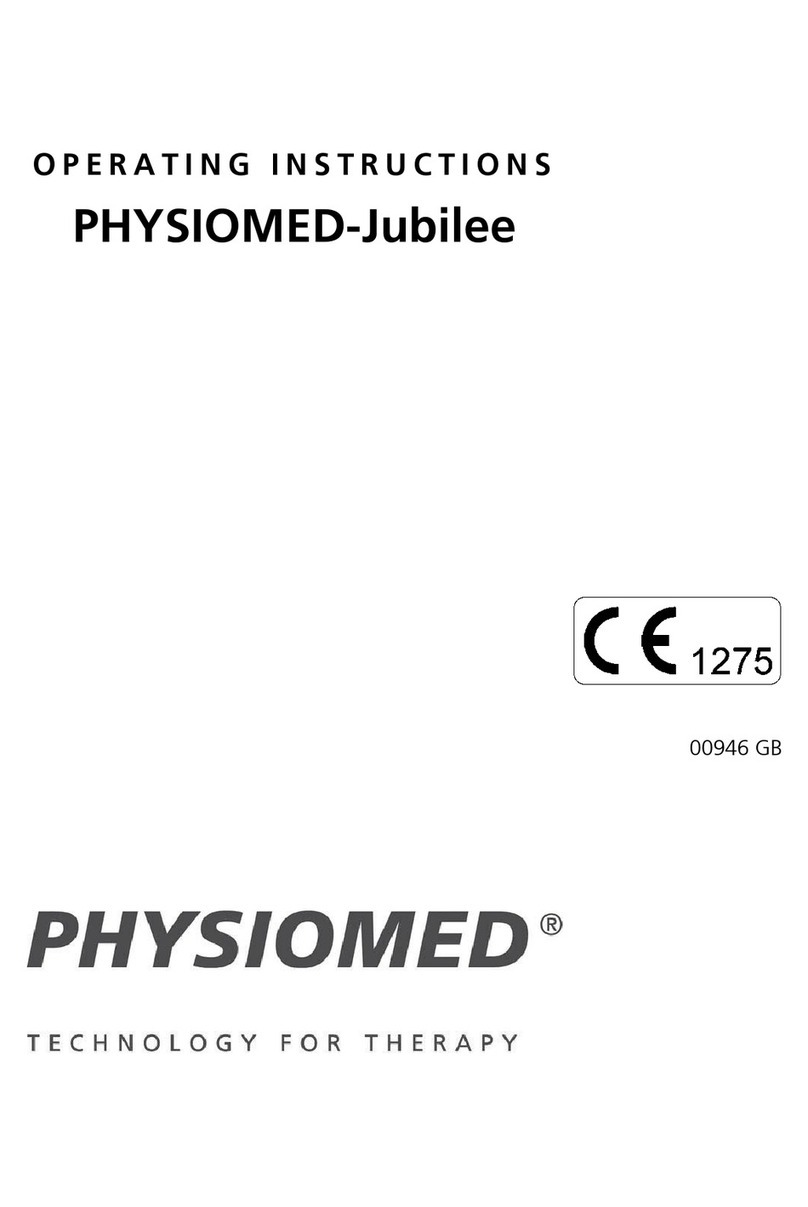Physiomed Deep Oscillation Personal User manual
Other Physiomed Medical Equipment manuals

Physiomed
Physiomed PHYSIOMED-Expert 2 User manual
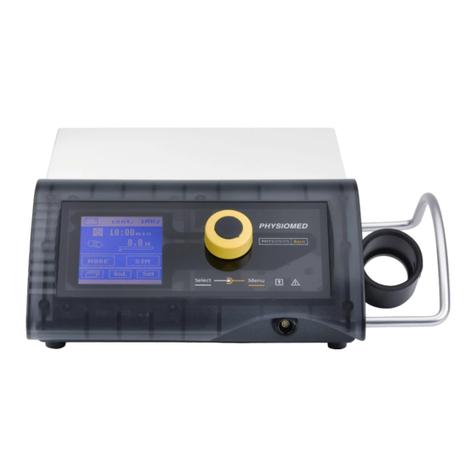
Physiomed
Physiomed PHYSIOSON-Basic User manual

Physiomed
Physiomed HIVAMAT 200 User manual
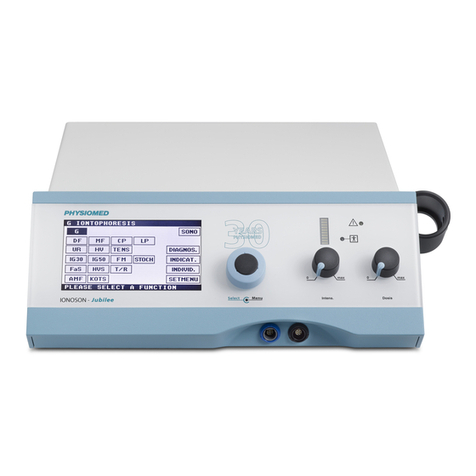
Physiomed
Physiomed IONOSON-Jubilee User manual
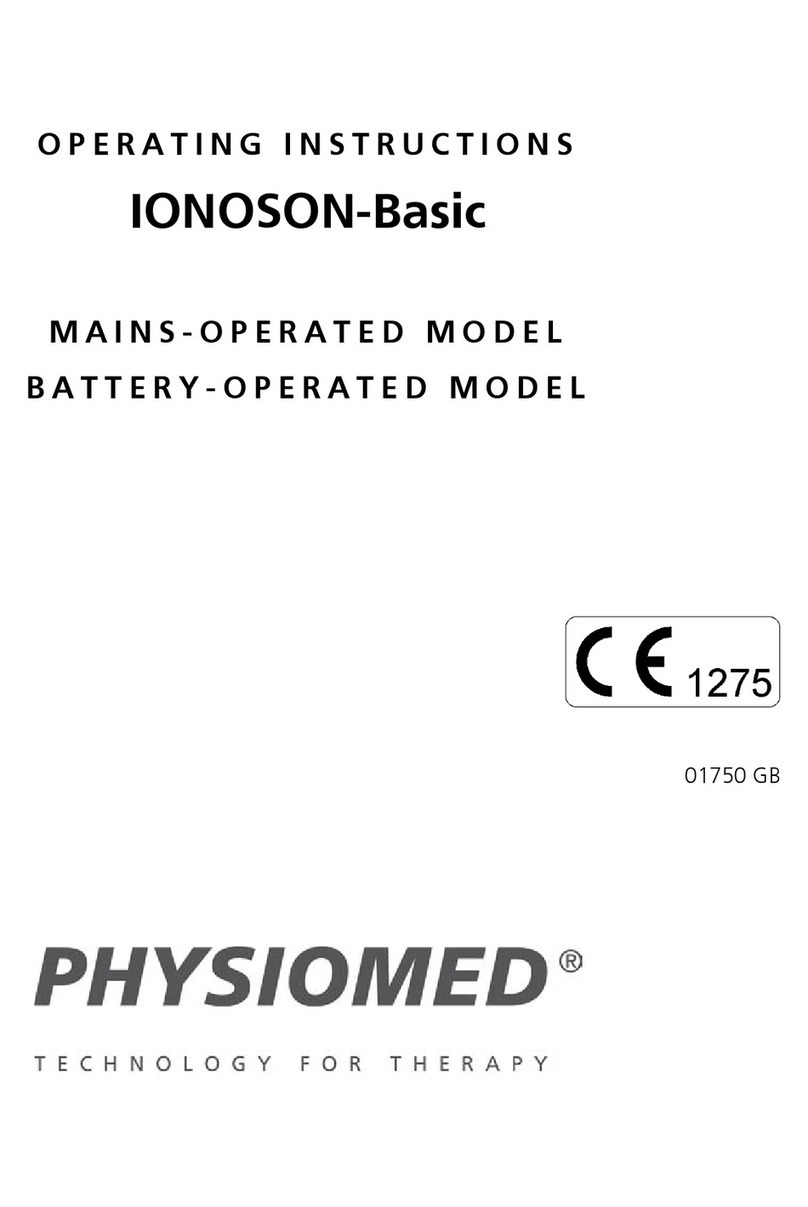
Physiomed
Physiomed IONOSON-Basic User manual
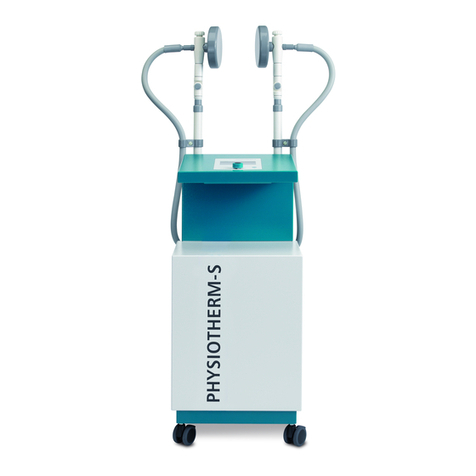
Physiomed
Physiomed PHYSIOTHERM-S User manual
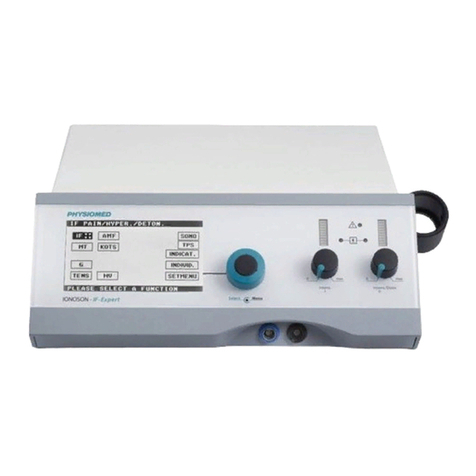
Physiomed
Physiomed IONOSON-IF-Expert User manual

Physiomed
Physiomed vocaSTIM-Master User manual
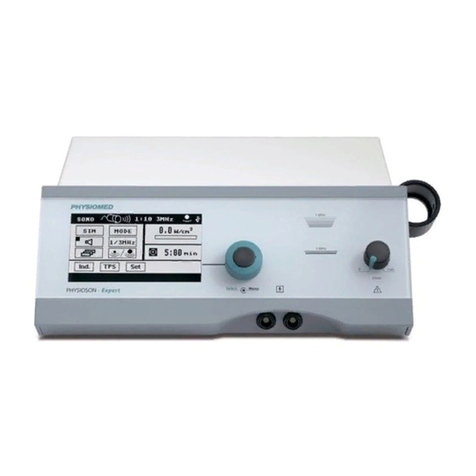
Physiomed
Physiomed PHYSIOSON-Expert User manual

Physiomed
Physiomed CHUDO HIVAMAT 200 Personal User manual
Popular Medical Equipment manuals by other brands

Getinge
Getinge Arjohuntleigh Nimbus 3 Professional Instructions for use

Mettler Electronics
Mettler Electronics Sonicator 730 Maintenance manual

Pressalit Care
Pressalit Care R1100 Mounting instruction

Denas MS
Denas MS DENAS-T operating manual

bort medical
bort medical ActiveColor quick guide

AccuVein
AccuVein AV400 user manual
